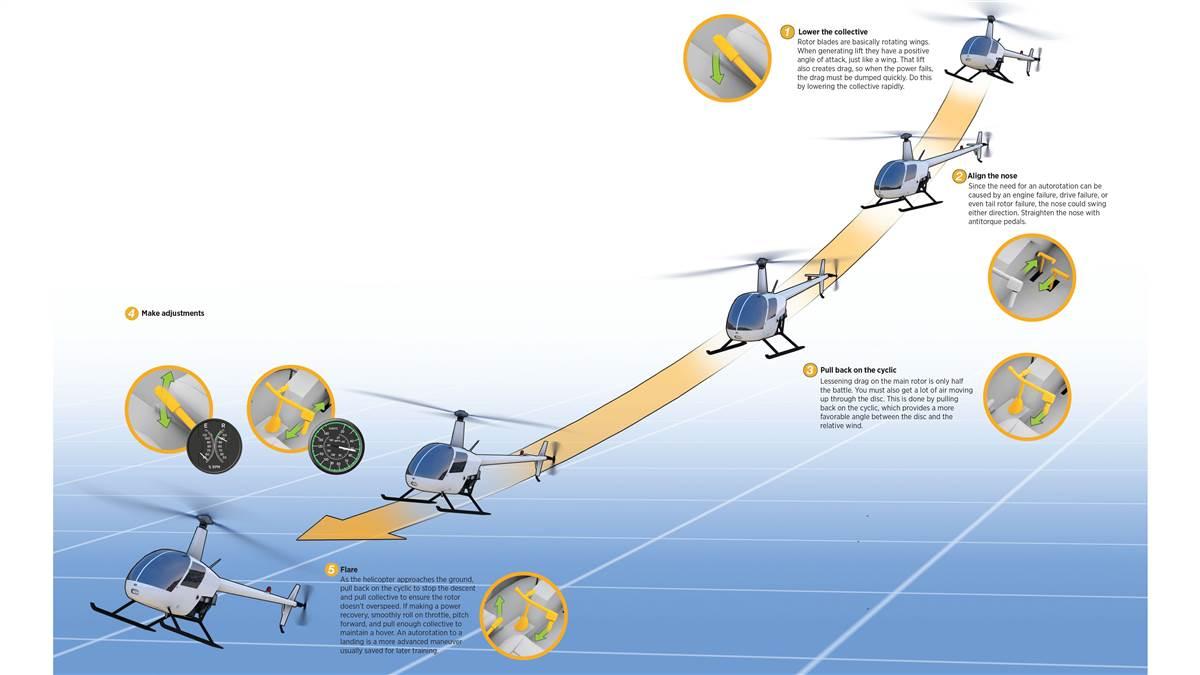Technique: Autorotations
Emergency descent and landing in a helicopter
When there’s a power problem in a helicopter, wind pushing up through the blades will provide a certain level of control, assuming the pilot does everything correctly. What makes flying an emergency descent so challenging in a helicopter is that certain steps must be done quickly in order to keep the blades spinning. If the pilot does this, the rotors will turn fast enough that the pilot can perform a shallow glide, or be in control going straight down, sideways, or backwards. A tradeoff to the stable gliding airplane is that a helicopter can be wedged into a very small landing area. Steps 1 through 3 should be done in quick succession.
Three buckets
Understanding energy trades
If you think back to high school physics, you’ll remember the difference between potential and kinetic energy, and how adding them results in total energy. In an autorotation, total energy is divided into three buckets of airspeed, rotor energy, and altitude. As the potential energy in one bucket fills, the kinetic energy from another must drain. Pilots can use this to their advantage by trading rotor speed for altitude or airspeed, and so on. A properly executed autorotation ensures the buckets don’t fully empty until on the ground.
Spin free
Turning the rotor without power
In a piston airplane the propeller is directly attached to the engine’s drive shaft. When the engine is turning, so too is the propeller. Helicopters take the engine power through a transmission that turns the main rotor and tail rotor at different rates. But if the engine quits the rotors still need to spin. To fix that problem, helicopters use a sprag clutch that automatically disengages the engine from the drive system any time rotor rpm drops below engine rpm. During an autorotation the rotor is spinning freely.




